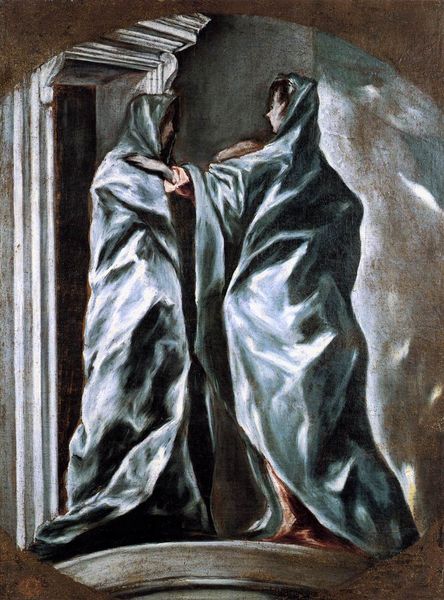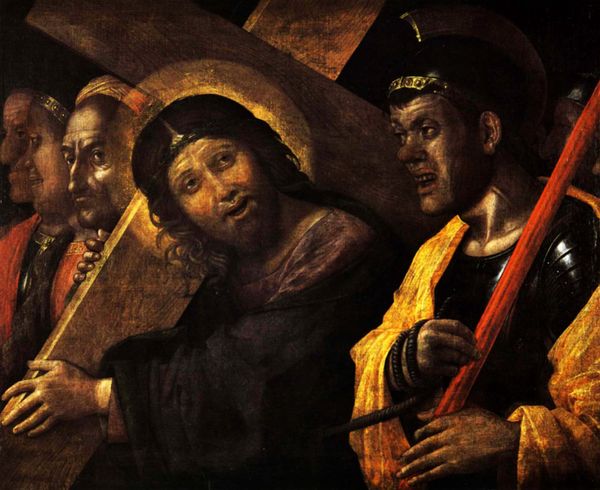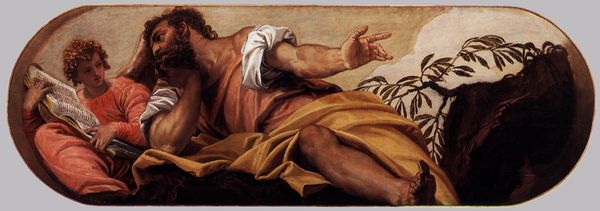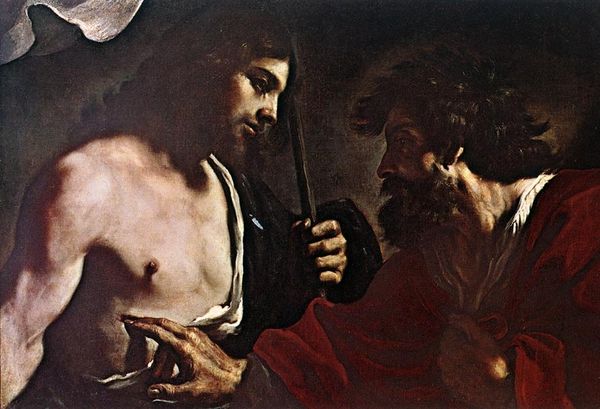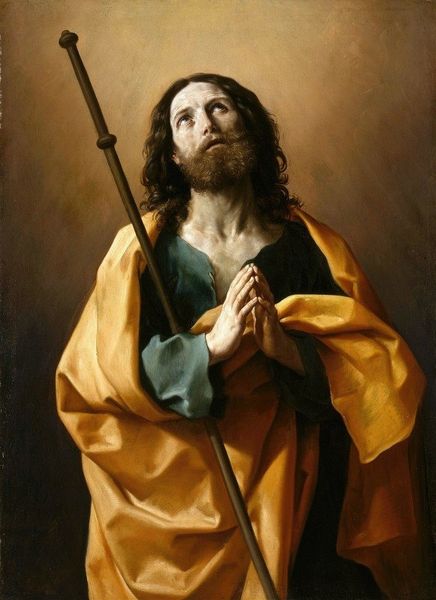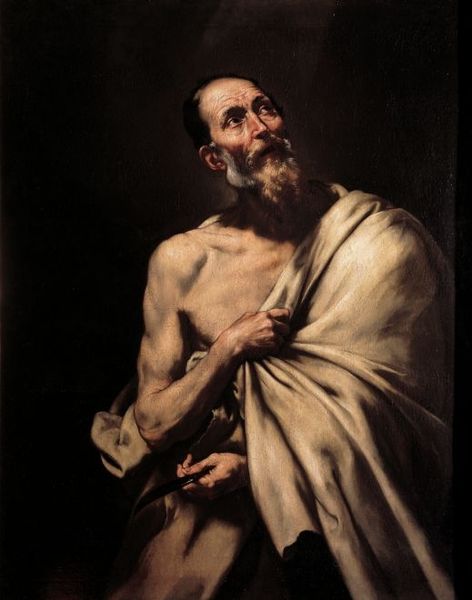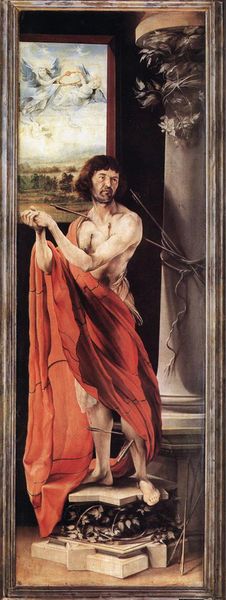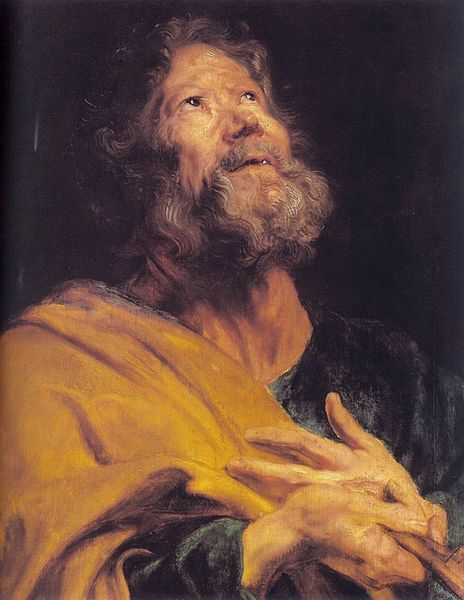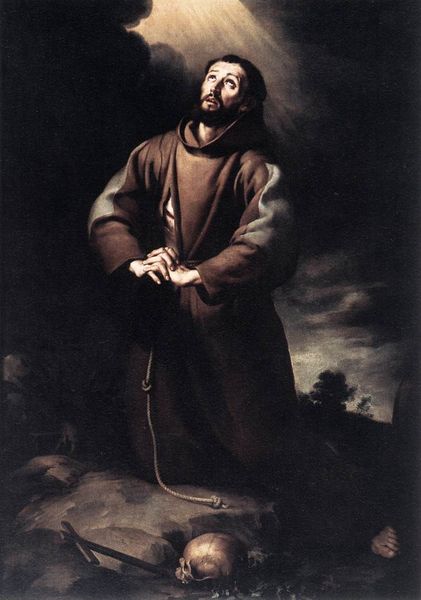
painting, oil-paint
#
portrait
#
portrait
#
painting
#
oil-paint
#
mannerism
#
history-painting
Dimensions: 97 x 77 cm
Copyright: Public domain
Curator: Let's consider "Apostle St. Philip" painted by El Greco around 1612, rendered in oil on canvas and residing in the El Greco Museum. I'm curious to know your perspective. Editor: This painting is quite striking. The stark contrast between the figure and the dark background really draws the eye to St. Philip, and the colors are intense, not really naturalistic. The wooden cross has a rather rough feel to it, making me think about the labour involved in its creation, in both art and life. What is it about the painting that resonates with you? Curator: I'm immediately drawn to the way El Greco treats materiality here. The paint itself seems to be built up in layers, almost like a physical substance molding the form. Notice the gold robe – it's not just a color, it's a weighty fabric rendered with visible brushstrokes. How does that compare to the textures in the cross he carries, do you think? Editor: Good point! The cross is much more raw. It looks like roughly hewn lumber. Whereas the gold robe has more complexity. The handling of those contrasting materials, and the fact that this painting relies entirely on paint... that tells a story about class, access, and artistry, right? The robe denotes St. Philip’s station, yet it is made of pigments available because of trade and processing; and the lumber for his cross is local, directly extracted and rendered into rough form through a more anonymous kind of labour. Curator: Exactly. And consider how El Greco, himself, participated in this labour. The painting, not as representation, but as the result of human effort using worldly substances... What did the contemporary reception of such artistry mean in terms of religious practice and social hierarchies? Editor: This piece prompts so many reflections about materials, making, and what art means in our world, especially regarding social inequalities. Thanks so much for your perspective. Curator: Indeed! The painting encourages us to contemplate the role materials play in conveying meaning and power within historical and societal contexts. Thank you.
Comments
No comments
Be the first to comment and join the conversation on the ultimate creative platform.

